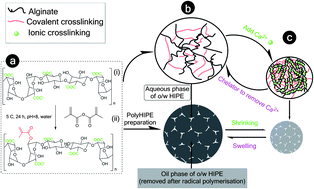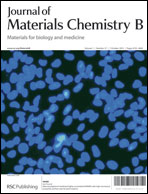Ion-responsive alginate based macroporous injectable hydrogel scaffolds prepared by emulsion templating†
Abstract
Ion-responsive biocompatible macroporous hydrogels with a well-defined highly interconnected open porous structure were synthesised using oil-in-


 Please wait while we load your content...
Please wait while we load your content...